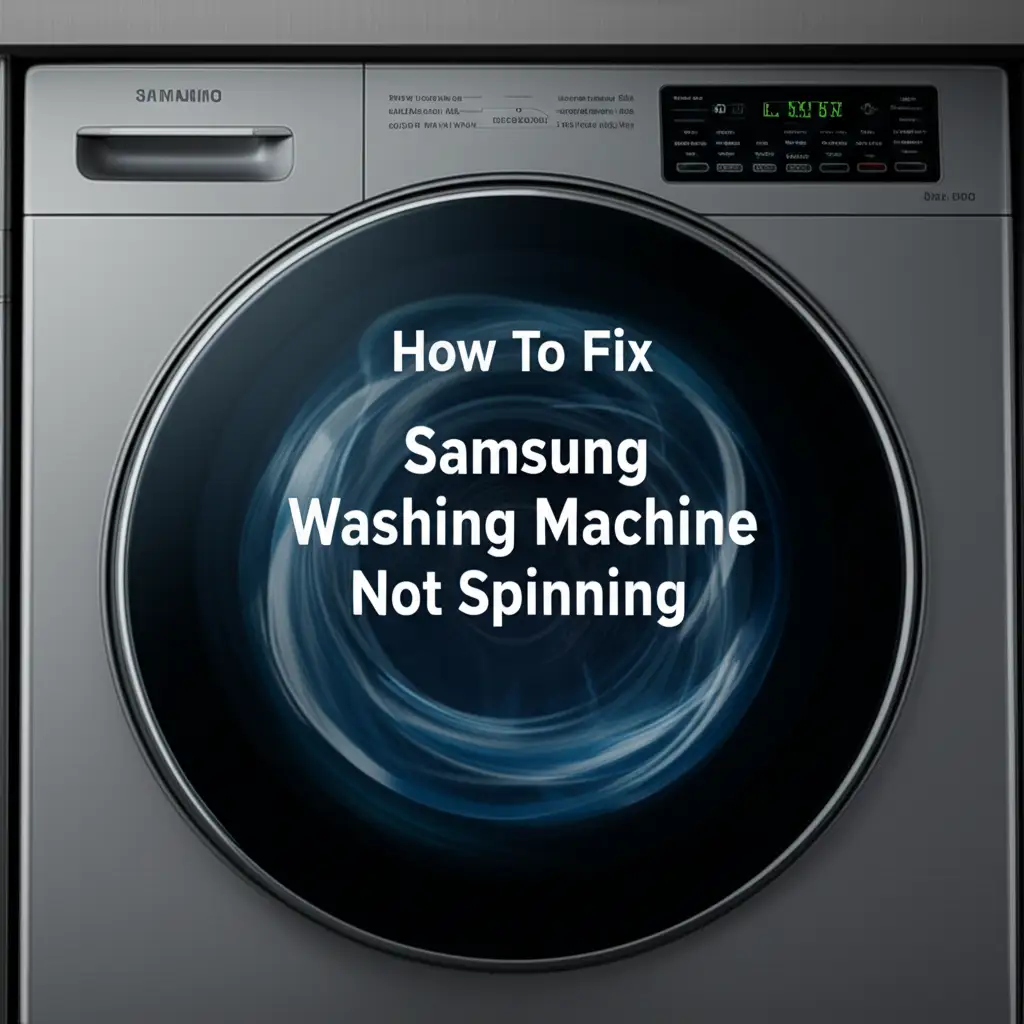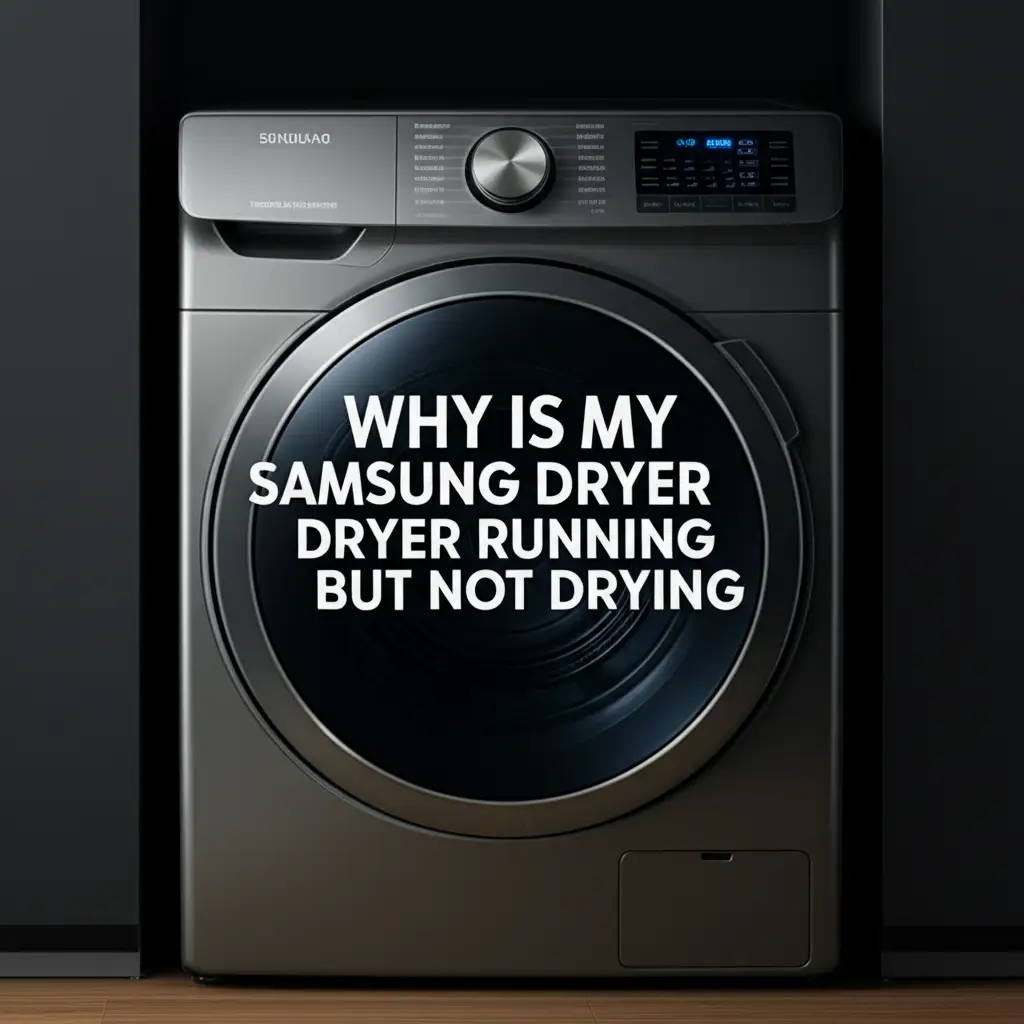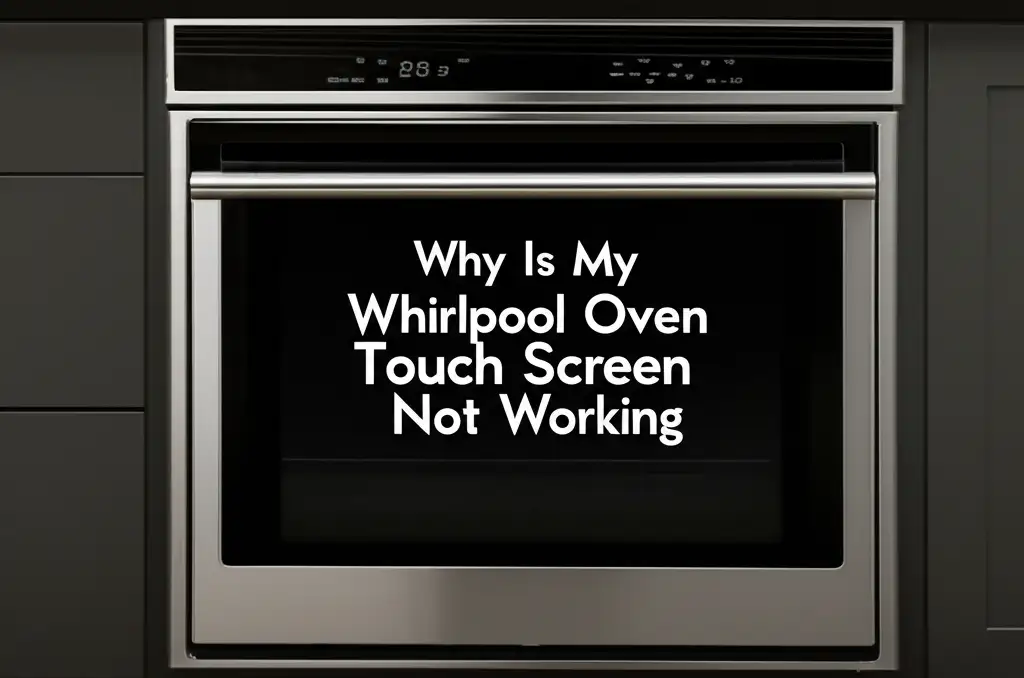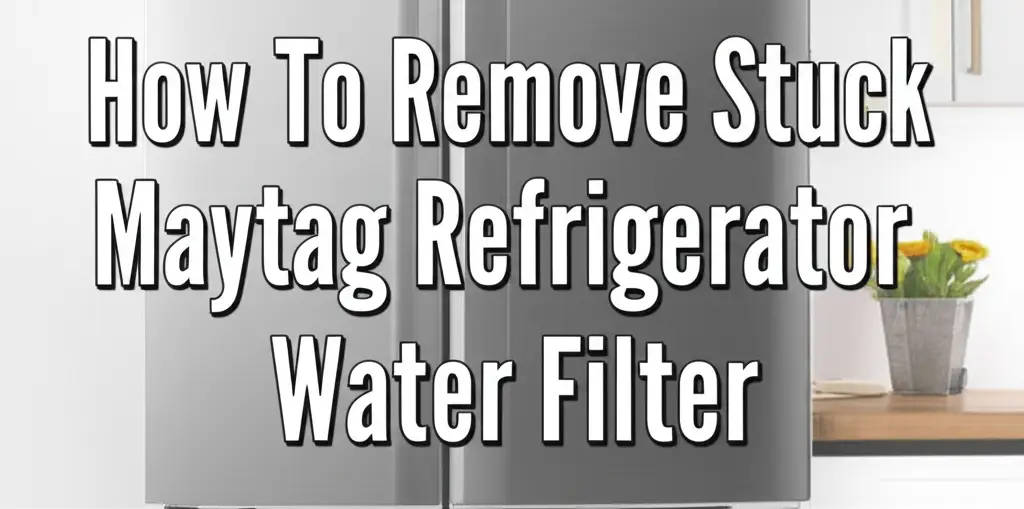· Todd Martin · Appliance Repair · 17 min read
Why Did My Kitchenaid Refrigerator Stop Dispensing Water
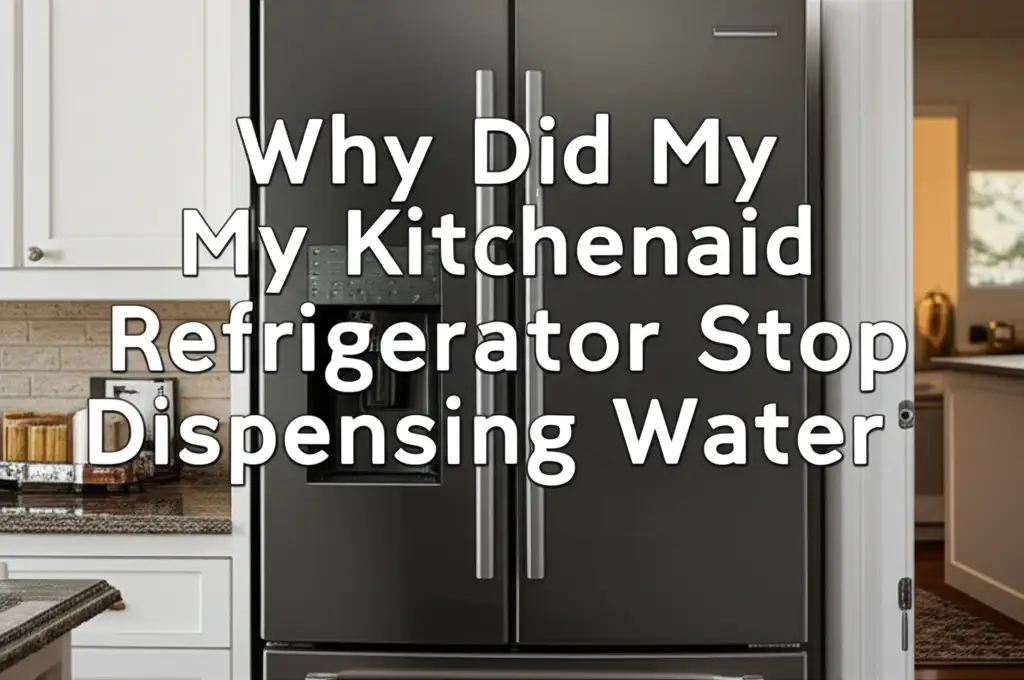
Troubleshooting Your KitchenAid Refrigerator: Why Water Stops Dispensing
Imagine a hot summer day. You walk to your KitchenAid refrigerator, eager for a cool glass of water, and nothing comes out. It is frustrating when your KitchenAid refrigerator stops dispensing water. This common appliance problem can disrupt your daily routine. Many owners face this exact issue. I understand how inconvenient this situation can be for you.
This guide helps you understand why your KitchenAid refrigerator stops dispensing water. We will explore common culprits. We will also provide clear, actionable steps for troubleshooting and fixing the problem. You can often resolve these issues yourself. Let’s get your water flowing again!
Takeaway
- Check the Water Filter: An old or incorrectly installed filter is a frequent cause of no water. Replace it regularly.
- Inspect the Water Line: Look for kinks, clogs, or ice blockages in the supply line behind the fridge.
- Verify Water Pressure: Ensure your home’s water pressure is sufficient and the shut-off valve is fully open.
- Examine Dispenser Components: Test the dispenser paddle, door switch, and water inlet valve for proper function.
- Reset the Refrigerator: A simple power cycle can sometimes clear minor glitches.
When your KitchenAid refrigerator stops dispensing water, common causes include a clogged water filter, a frozen or kinked water supply line, a faulty water inlet valve, or a malfunctioning dispenser switch. Resolving these often involves straightforward checks and minor repairs, ensuring your appliance operates as intended.
Understanding Your KitchenAid Refrigerator’s Water System
Before diving into specific problems, it helps to know how your KitchenAid refrigerator delivers water. The journey starts with your home’s main water supply. A small line connects from this supply to the refrigerator. This line then feeds water into a water filter.
The filter cleans the water before it goes further. After filtration, water travels to the water inlet valve. This valve controls the flow of water into the refrigerator’s dispensing system. From there, water moves through internal lines. These lines lead to the dispenser located on your refrigerator door. When you press the dispenser paddle, it activates a switch. This switch tells the water inlet valve to open, allowing water to flow to the nozzle. Understanding this path helps in pinpointing where a problem might exist. Every component in this chain must work correctly for water to dispense. A problem at any point will stop the water flow. This basic knowledge empowers you to troubleshoot more effectively.
Sometimes, issues like a slow dispenser indicate a partial blockage. If you notice your KitchenAid refrigerator water dispenser is slow, it might be an early sign of a problem. Why Is My KitchenAid Refrigerator Water Dispenser So Slow can offer more insights into this specific symptom. Identifying the exact point of failure is key to a quick fix.
The Critical Role of Your KitchenAid Water Filter
The water filter is one of the most common reasons your KitchenAid refrigerator stops dispensing water. Over time, the filter collects sediment and impurities. This buildup can restrict water flow significantly. A completely clogged filter will prevent any water from passing through. Many people overlook this simple maintenance step.
You should replace your refrigerator water filter every six months. Your refrigerator’s manual will confirm the specific schedule. An expired filter loses its filtering capability. It also becomes a major obstruction to water flow. Always use genuine KitchenAid replacement filters or compatible ones. Generic filters may not fit correctly or provide adequate flow.
Clogged or Old Water Filter
A dirty filter is the number one suspect when water stops flowing. I have seen this issue many times. The filter has a lifespan, typically six months. Once it expires, it gets saturated with contaminants. This saturation blocks the path for water.
To check this, remove the old filter. Try dispensing water without it. If water flows freely, the filter was the problem. This test confirms the diagnosis quickly. Remember to install a new filter after testing.
Incorrect Filter Installation
Even a new filter can cause problems if installed incorrectly. Each filter type has a specific way it locks into place. If it’s not fully twisted or seated, it won’t connect properly. This improper connection prevents water flow.
Carefully follow the instructions that come with your new filter. Ensure it clicks into place securely. Sometimes, a slight twist is all it needs. Improper installation can also cause leaks. Refer to your owner’s manual for specific filter replacement steps.
Air in the System After Filter Change
After replacing the water filter, air can get trapped in the water lines. This air needs to be purged. If you don’t run enough water through, the dispenser might sputter or not dispense at all.
To purge the air, dispense about 2 gallons of water. Hold the dispenser lever for several minutes. Do this continuously until water flows steadily. This process pushes all the air out of the lines. This step is crucial for consistent water flow. Remember, you might not always need a water filter. For more information, you might wonder, Can I Use My KitchenAid Refrigerator Without the Water Filter? The answer depends on your specific model and preferences, but it’s often possible as a temporary troubleshooting step or long-term solution.
Investigating Water Line Issues in Your KitchenAid Refrigerator
The water supply line carries water from your home’s main supply to the refrigerator. Problems with this line are another common reason your KitchenAid refrigerator stops dispensing water. These issues can range from simple kinks to more severe blockages. Identifying the exact spot of the problem is key to a quick fix. Always unplug your refrigerator before pulling it out to inspect the water line. This prevents accidental shocks or damage.
Kinked Water Line
A kinked water line is a surprisingly common problem. This usually happens when the refrigerator is moved. Even a slight push against a wall can bend the flexible line behind the unit. A kink severely restricts or completely stops water flow.
To check for kinks, gently pull your refrigerator away from the wall. Inspect the entire length of the water supply line. Look for any sharp bends or crimps. Straighten any kinks you find. Ensure there is enough slack in the line so it doesn’t bend when you push the fridge back.
Frozen Water Line
In some cases, the water line inside the freezer door or in the back of the freezer compartment can freeze. This is more common if the freezer temperature is set too low. A frozen line forms an ice blockage, preventing water from flowing through.
To identify a frozen line, try to feel the line. If it feels hard or has ice visible, it is likely frozen. You can try to thaw it by unplugging the refrigerator for a few hours. Alternatively, use a hairdryer on a low setting to gently warm the affected area. Do not use high heat. Direct the air only at the line. Once thawed, dispense water to flush any remaining ice. Adjust your freezer temperature if it was too low.
Clogged Water Supply Line
Mineral deposits or sediment can build up in the water supply line over time. This buildup creates a partial or complete clog. If you have hard water, this issue is more likely. A clogged line will significantly reduce water flow or stop it entirely.
Disconnect the water line from the refrigerator and inspect it. Look for any visible obstructions. You might need to flush the line from your home’s water supply to clear it. If the line is old and corroded, replacing it might be the best solution. Ensure the new line is properly connected without leaks. How to Hook Up Water to KitchenAid Refrigerator provides detailed instructions on proper connection.
Troubleshooting Dispenser Mechanism and Valve Problems
Beyond the filter and water lines, the internal components of your KitchenAid refrigerator’s dispensing system can fail. These parts include the dispenser switch, the water inlet valve, and the dispenser itself. Each plays a crucial role in delivering water. A malfunction in any of these can be why your KitchenAid refrigerator stops dispensing water.
Faulty Dispenser Lever or Switch
When you press the dispenser paddle, it activates a small switch. This switch signals the refrigerator to open the water valve. If this switch is faulty, it won’t send the signal. As a result, no water will dispense, even if everything else is working.
To check this, listen closely when you press the lever. Do you hear a faint click or hum? If not, the switch might be broken. You can often access this switch by removing the dispenser housing. A multimeter can test for continuity. If there is no continuity when pressed, the switch needs replacement. This repair usually requires professional help unless you are very comfortable with electrical work.
Malfunctioning Water Inlet Valve
The water inlet valve is an electrically operated valve located at the back of your refrigerator. Its job is to open and allow water into the dispenser and ice maker when signaled. If this valve fails, no water will enter the system. The valve can fail mechanically or electrically.
- No Power to Valve: First, ensure the valve is receiving power when the dispenser is activated. Check electrical connections.
- Mechanical Failure: The valve may be stuck closed. Sometimes, tapping it gently can free it, but often, it needs replacement.
- Mineral Buildup: Hard water can cause mineral deposits to accumulate within the valve, preventing it from opening fully.
To test the valve, you typically need a multimeter. Test for continuity across the solenoid terminals. If there’s no continuity, the valve is likely bad. You can often purchase replacement water inlet valves online or from appliance parts stores. Replacing it involves shutting off the water, disconnecting the old valve, and installing the new one. Ensure all connections are secure to prevent leaks. Also, consider if your KitchenAid refrigerator stops making ice, as the inlet valve also supplies the ice maker. For more information on this, see Why Does My KitchenAid Refrigerator Stop Making Ice.
Frozen Dispenser Nozzle
Sometimes, the water line or nozzle inside the freezer door can freeze. This is a very common issue, especially if the freezer door is opened frequently or left ajar. Cold air can cause the residual water in the nozzle to freeze. This creates a small ice plug.
To thaw a frozen nozzle, you can try using a hairdryer on a low setting. Direct the warm air at the dispenser area for a few minutes. Alternatively, unplug the refrigerator for a few hours. This allows the internal components to warm up and melt any ice. Once thawed, try dispensing water. If it freezes again, check your freezer’s temperature settings. Ensure the freezer is not excessively cold.
Addressing Low Water Pressure and Supply Concerns
Sometimes, the problem isn’t with the refrigerator itself, but with your home’s water supply. Low water pressure or issues with the external water connection can prevent your KitchenAid refrigerator from dispensing water effectively. It is important to check these external factors before assuming a fault with the appliance. These checks are usually simple and quick to perform.
Insufficient House Water Pressure
Your refrigerator needs a certain amount of water pressure to operate its dispenser correctly. If the water pressure in your home is too low, the dispenser may only trickle water or not dispense at all. This can happen if multiple water-using appliances are running simultaneously. For example, if someone is taking a shower and the washing machine is filling.
To check your home’s water pressure, try opening a faucet in your kitchen sink. Observe the flow. Is it strong and steady? If the faucet also has weak pressure, the issue is likely with your home’s water supply. You might need to wait for other water-using appliances to finish. If the problem persists, you might have a broader plumbing issue in your home.
Closed or Partially Closed Water Shut-Off Valve
Every refrigerator with a water dispenser connects to a water shut-off valve. This valve controls the water supply to the refrigerator. If this valve is closed or only partially open, no water or very little water will reach your KitchenAid refrigerator. This is often an overlooked detail.
- Locate the Valve: The shut-off valve is usually behind the refrigerator or under the kitchen sink. It might also be in the basement. It looks like a small knob or lever on the water line.
- Ensure it’s Open: Make sure the valve is fully open. Turn it counter-clockwise until it stops. If it’s a lever, ensure it’s parallel with the water pipe. If it was closed, opening it should restore water flow.
Faulty Saddle Valve Connection
Older homes or installations sometimes use a “saddle valve” to tap into the main water line for the refrigerator. Saddle valves are small clamp-on devices. They can become clogged with mineral deposits over time. The piercing needle inside can also become dull or break. This restricts water flow significantly.
Saddle valves are generally not recommended by plumbers due to their tendency to clog and leak. If you have a saddle valve and suspect it’s the problem, it’s best to replace it with a proper T-fitting and a quarter-turn shut-off valve. This will provide a more reliable and secure connection for your refrigerator’s water supply. A professional plumber can perform this replacement quickly.
Uncommon Electrical or Control Board Issues
While less common, electrical faults or issues with the refrigerator’s control board can also cause the water dispenser to stop working. These problems often require more advanced troubleshooting and possibly professional assistance. However, understanding them can help you rule out simpler causes.
Malfunctioning Door Switch
Your KitchenAid refrigerator has a door switch. This switch detects if the freezer or refrigerator door is open or closed. Some models are designed to prevent water dispensing if a door is ajar. This is a safety feature. If the door switch is faulty, it might incorrectly signal that a door is open, even when it is closed. This would prevent the water dispenser from activating.
To check this, try pushing the door switch manually when the door is open. Does it click? Does the interior light turn off? If the light stays on or there’s no click, the switch might be faulty. Replacement of a door switch is usually straightforward. You can often pop them out and replace them with a new one. Ensure the refrigerator is unplugged first.
Defective Dispenser Control Board
The dispenser control board manages the entire dispensing operation. It receives signals from the dispenser lever and sends commands to the water inlet valve. If this board malfunctions, it cannot send the correct signals. This would cause the water dispenser to stop working.
Symptoms of a bad control board can be erratic behavior. The dispenser might work sometimes, then stop, or not respond at all. Diagnosing a faulty control board is difficult for a DIY enthusiast. It often involves specialized testing and replacement of the entire board. If you have ruled out all other common issues, a control board problem might be the culprit. I suggest calling a qualified technician for this diagnosis and repair.
Wiring Issues or Loose Connections
Internal wiring issues or loose electrical connections can disrupt the power supply to the dispenser components. A wire might become frayed or disconnected over time. This could prevent the dispenser switch or water inlet valve from receiving power.
- Visual Inspection: Unplug the refrigerator. Carefully inspect the wiring harness around the dispenser assembly and the water inlet valve. Look for any visible damage or loose wires.
- Continuity Test: Use a multimeter to test for continuity in the wires. If a wire has no continuity, it is broken.
Repairing wiring can be delicate. If you are not experienced, it is safer to call a professional. Improper wiring can cause further damage or pose a safety risk. Always ensure the refrigerator is unplugged before inspecting any wiring.
Professional Help: When to Call an Expert
While many KitchenAid refrigerator water dispenser issues are DIY-friendly, some problems are complex. Knowing when to call a professional appliance technician can save you time, effort, and potential further damage. Safety should always be your top priority. Do not attempt repairs that involve high voltage or complex refrigeration systems if you are uncomfortable.
When DIY Isn’t Enough
You have tried all the troubleshooting steps. You have checked the water filter, inspected the water lines, and tested the dispenser components. Still, your KitchenAid refrigerator stops dispensing water. This is a clear sign that the problem might be deeper. It could involve:
- Sealed System Issues: Problems with the refrigerant or sealed system. This directly impacts cooling, which can cause water lines to freeze persistently. This requires specialized tools and EPA certification.
- Advanced Electrical Diagnostics: If you suspect a faulty main control board or a complex wiring short. These parts are expensive, and incorrect diagnosis can lead to wasted money.
- Internal Component Replacement: Replacing parts like the water inlet valve or dispenser assembly. While some individuals are comfortable, if you are not, a technician ensures proper installation.
Do not feel discouraged if you cannot fix the issue yourself. Modern appliances are complex. Professional technicians have specific training, diagnostic tools, and access to genuine KitchenAid parts. They can quickly pinpoint the exact problem and perform the repair safely and efficiently.
Benefits of Hiring a Professional
Hiring a professional appliance repair service offers several advantages:
- Expert Diagnosis: Technicians quickly identify the root cause using their experience and tools. This saves you trial-and-error time.
- Safe Repair: They follow safety protocols for electrical and plumbing work. This reduces the risk of injury or further damage to your appliance.
- Quality Parts: Professionals often use genuine manufacturer parts. This ensures compatibility and longevity of the repair.
- Warranty: Most reputable repair services offer a warranty on their work. If the same problem recurs, they will fix it without additional charge.
- Time-Saving: A professional can complete the repair much faster than someone unfamiliar with the task. This gets your water dispenser working again quickly.
Before calling, have your KitchenAid refrigerator model number ready. Describe the symptoms you observed clearly. This helps the technician prepare and brings the right tools and parts. This information can speed up the repair process.
FAQ Section
How do I reset my KitchenAid refrigerator water dispenser?
To reset your KitchenAid refrigerator’s water dispenser, simply unplug the refrigerator from the wall outlet for about 5 minutes. Then, plug it back in. This hard reset can clear minor electronic glitches. After plugging it back in, dispense water for a few minutes to re-prime the system and remove any air.
Why is there no water coming out after changing the filter on my KitchenAid?
After changing the water filter, air often gets trapped in the lines. To fix this, hold the dispenser lever down for 3-5 minutes continuously. This purges the air from the system. Dispense at least 2 gallons of water. If still no water, check the filter’s installation. Ensure it is seated correctly and twisted fully into place.
Can a frozen water line prevent water from dispensing?
Yes, a frozen water line is a common cause of no water dispensing. Ice can form inside the line, especially if the freezer temperature is too low or if the line is exposed to cold air. You can try thawing it by unplugging the refrigerator for a few hours. Use a hairdryer on a low setting to gently warm the line, then dispense water to flush.
Where is the water inlet valve on a KitchenAid refrigerator?
The water inlet valve on most KitchenAid refrigerators is located on the lower back of the unit. You will need to pull the refrigerator away from the wall to access it. It is usually a brass or plastic valve with the water supply line connected to one side and internal refrigerator lines connected to the other.
How often should I change my KitchenAid water filter?
You should change your KitchenAid refrigerator water filter every six months. This ensures optimal water quality and prevents clogs that can restrict water flow. Your refrigerator might have a filter indicator light that turns on when a replacement is needed. Consistent replacement helps maintain good water pressure.
Conclusion
It is truly frustrating when your KitchenAid refrigerator stops dispensing water. I know this from personal experience. This guide has explored the most common reasons why this happens. We covered everything from a simple clogged water filter to more complex issues like a faulty water inlet valve or frozen lines. By systematically checking each potential problem, you can often diagnose and fix the issue yourself.
Always remember to prioritize safety. Unplug your appliance before you start any inspection or repair. If you have checked the filter, water lines, and dispenser components, and still have no water flow, it might be time for professional help. Appliance technicians have the expertise and tools to address complex problems efficiently. Getting your KitchenAid refrigerator dispensing water again is achievable. With a bit of patience and this guide, you can enjoy refreshing filtered water once more.
- kitchenaid refrigerator water dispenser
- refrigerator not dispensing water
- kitchenaid fridge repair
- water filter replacement
- water line clogged
- appliance troubleshooting
- home repair guide


